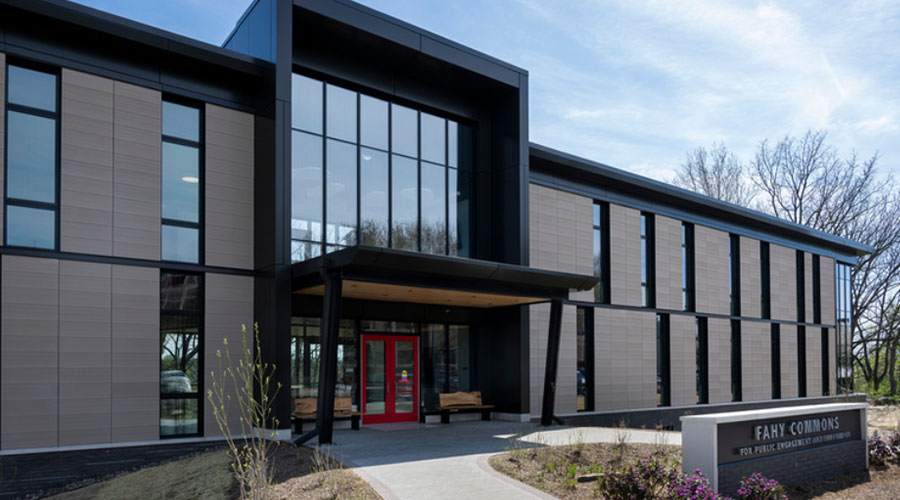Pitch Pockets, Water Vapor can Cause Single-Ply Roof Trouble
Compared to EPDM, PVC and TPO can be more difficult to form around details with unique geometry (i.e., square posts, angles, wide-flange beams). Flashing constructability and selection of an appropriate system based on the known detailing requirements are key factors in preventing leakage at flashing locations. Designers and installers should consider detailing requirements that are specific to the project during the membrane selection.
"Pitch pockets" are another source of trouble. Also known as pitch pans, pitch pockets are flanged pieces of flashing material placed around irregularly shaped roof penetrations and filled with grout and a pourable sealer. Although fairly common at complex penetrations, pitch pockets rely on sealants to remain watertight and are susceptible to leakage over time if not properly maintained. Modifying detailing to avoid pitch pockets is a prudent design approach for single-ply systems.
Prefabricated flashings are also available for single-ply roofing systems that were not available for built-up roofing systems; these components reduce reliance on field-constructed details and improve reliability at flashing.
Ineffective integration with building walls is also a common cause of moisture getting below all roofing systems, including single-ply membranes. Reliable detailing at the perimeter of roofing systems is critical to preventing roof leakage.
3. Water Vapor Diffusion. Water vapor can flow through solid (but vapor-permeable) roofing materials and is driven by a difference in moisture levels on the two sides of the material. If the air within a building has higher moisture content than the exterior environment, the "vapor drive" will be towards the exterior, tending to "push" water vapor from the inside to outside. On the other hand, in more temperate climates, the exterior air may have a higher relative moisture content and the vapor drive may be from the exterior to the interior. Water vapor that flows through a roof system can condense into liquid water if it reaches a cold enough location within the assembly. A properly placed vapor retarder can prevent water vapor from reaching points where it can condense, reducing the risk of condensation within the roof assembly.
Built-up roofing systems often include insulation that is set in bitumen, which serves to adhere the insulation and can act as a vapor retarder if suitably reinforced, such as with layers of roofing felt. Single-ply roofing systems typically include insulation that is adhered with a urethane adhesive or is mechanically fastened. Neither method, by itself, addresses vapor diffusion. Though rules of thumb exist for providing vapor retarders, each project should be analyzed to verify the need for and appropriate specification of a vapor retarder. In many cases, the use of concrete as a roof deck will require the use of a vapor retarder regardless of interior conditions or climate, as built-in moisture in the slab can lead to moisture problems if allowed to diffuse through the roof system over time.
Related Topics:














